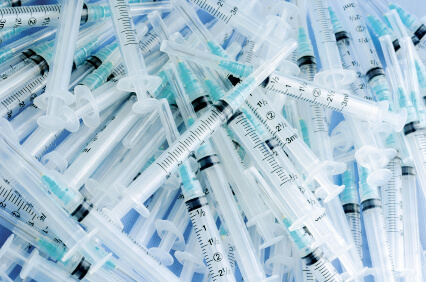Summary
- There is everything to gain from working in campaign mode, a breakthrough in isolator productivity
- Visual inspection: main findings of ANSM inspections
- Cleaning validation of production equipment: Visual inspection, accreditation of staff in “visually clean”
- A Refresher on Disinfectant Wet Contact Time
- THE EU MDR and IVDR : Combination products now subject to the same degree of surveillance as standalone medical devices
- Suitability of the Mono-Mac-6 cell line for the detection of endotoxins and non-endotoxin pyrogens
- Biological indicators, random growth. Is your decontamination cycle really at fault?
- Determining a Strategy for Container Closure Integrity Testing of Sterile Injectable Products
- Efficient Control Strategy enabled by structured Knowledge
- High-performance solution for real-time colony counts on filtration membranes in microbiological analysis with ScanStation
THE EU MDR and IVDR : Combination products now subject to the same degree of surveillance as standalone medical devices
All manufacturers of medical devices that market products in the EU are aware of the enormous significance of the new regulation on medical devices (MDR) and/or the in vitro diagnostics regulation (IVDR) for the European regulatory environment. The impact that these regulatory changes may have on pharmaceutical companies and their products is less obvious, however.

Although the new regulation principally affects manufacturers of medical devices, pharmaceutical companies should not assume that they are exempt from the tightening of clinical control that is sweeping Europe. Whether they manufacture combination products or companion diagnostics, pharmaceutical companies must familiarise themselves with the requirements before the entry into force of the new regulations in May 2021 for the MDR and one year later, in May 2022 for the IVDR. In this article, Elizma Parry, Director of Global Clinical Practice at Maetrics, offers practical advice to companies wishing to obtain a new CE marking for a medical device. With little time to lose before the point of no return, pharmaceutical product manufacturers must rapidly undertake the first of a series of preparatory steps if they wish to achieve compliance smoothly and in a timely manner and continue to place their products on the EU market.
In the European Union, combination products are regulated as medicines or medical devices, depending on the component that has the auxiliary function. Insulin injection pens and dose inhalers, for example, contain a medical device component which acts as the administration system of the integrated medicinal component – making its role ancillary to that of the medicine. This type of combination product is currently regulated as a medicine in accordance with Directive 2001/ 83/EC of the EU on medicines for human use, and scrutiny is thus focused principally on the medicinal formulation of the product. Filling the regulatory vacuum which existed for combination products within the framework of previous directives, the EU MDR will leave no medical device exempt from strict control, whether its function is central or ancillary to the product. From May 2021, combination products will have to satisfy the requirements set out in Article 117 of the EU MDR, which modifies Annex 1 of the directive on medicines for human use. This reworking stems from the growing complexity of combination products and the necessity to regulate the auxiliary device components with the same level of control as standalone medical devices. It should be noted that not all products composed of both a medicinal element and a device element will necessarily constitute a combination product – solely those for which both parts are essential to the proper functioning of the product.
So, the MDR will have a particularly significant impact on pharmaceutical companies that manufacture combination products with auxiliary medical devices, as this will represent a larger adjustment for them than for the manufacturers of products that are already regulated as medical devices. Pharmaceutical companies that are less familiar with these rules may lack the data necessary to submit a clinical evaluation report and may have to take on the costly and prolonged task of collecting additional clinical data for the device component. Companies are encouraged to invest in these resources for the first time ever in order to facilitate the continuous updating of clinical data in the future.
Likewise, manufacturers of combination products will have to speak to a notified body designated for medical devices, perhaps for the first time. Given that Europe currently lacks notified bodies for the examination of technical documentation, it is probable that those that are active will have difficulty in dealing with the request. Today there are only 13 notified bodies designated within the framework of the EU MDR, and there is therefore a risk of ensuing delays in the approval process. With the EU MDR deadline less than a year away, manufacturers are strongly encouraged to submit the documentation as early as possible in order not to overshoot the deadline.
Companion diagnostics will also be affected by the changes in the regulatory landscape, now coming under the jurisdiction of the IVDR. Companion diagnostics will be classified under a new IVDR classification in the second risk category, class C, and will therefore be subject to a high level of clinical surveillance, in particular for pharmaceutical companies that develop their own companion diagnostics. Given the co-development of the in vitro diagnostics device with its associated medicine, the notified body must also liaise with a competent authority with regard to medicines.
The world of the IVDR is more keenly affected by the shortage of notified bodies, since currently there are only 3 designated organisations. Pharmaceutical companies are therefore lining up not only to receive certification from a notified body, but also to wait for these notified bodies to be designated within the framework of the IVDR. To this end, manufacturers are advised to go further than simply submitting their documentation on time, and to contact the notified bodies pending designation by their competent national authority for their specific product domain. This will help to guarantee companies a place at the front of the line.
Stricter regulation of combination products and companion diagnostics will be applied within the framework of the MDR and IVDR, and pharmaceutical companies will have to comply with the same requirements as manufacturers of medical devices, as regards the device component. That being said, they will probably not have the experience that medical device companies have in collecting the necessary documentation and liaising with a notified body, and should therefore plan additional time to complete these steps. Only companies ready to face up to the negative consequences of failing to meet a deadline, namely the potential withdrawal of their products from European markets and loss of reputation that will be devastating for the company, should ignore the crucial importance of preparing themselves for the new requirements. Conversely, those who devote sufficient time and resources will be able to enjoy a gentle transition period and avoid any unpleasant surprises.
Partager l’article

Elizma Parry – Maetrics
Apportant plus de 25 ans d’expérience à l’équipe Maetrics, Elizma Parry est une professionnelle du secteur hautement qualifiée qui possède des compétences en leadership éprouvées, ainsi qu’une solide expérience de management dans les domaines de la sécurité clinique, de la réglementation et de la gestion de la qualité. Elle prend la tête de la Pratique clinique du cabinet, une équipe dédiée à la démonstration des preuves cliniques et à l’évaluation des performances pour la mise en conformité avec la réglementation internationale des dispositifs médicaux et des dispositifs de diagnostic in vitro (IVD). Avant de rejoindre Maetrics, elle a assuré la codirection provisoire d’un Organisme Notifié basé en Europe
information@maetrics.com
Glossaire
MDR: Medical devices regulation
IVDR: In vitro diagnostics regulation
Combination products: Combination products can be composed of any combination of device, medicine, or biologically active product.
Standalone medical devices: Standalone medical devices are medical devices that do not contain medicinal components, that is they do not belong to the combination product category.




